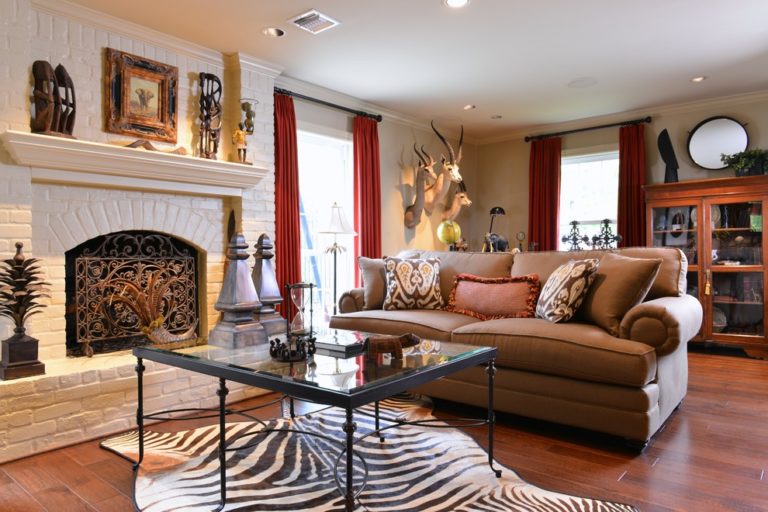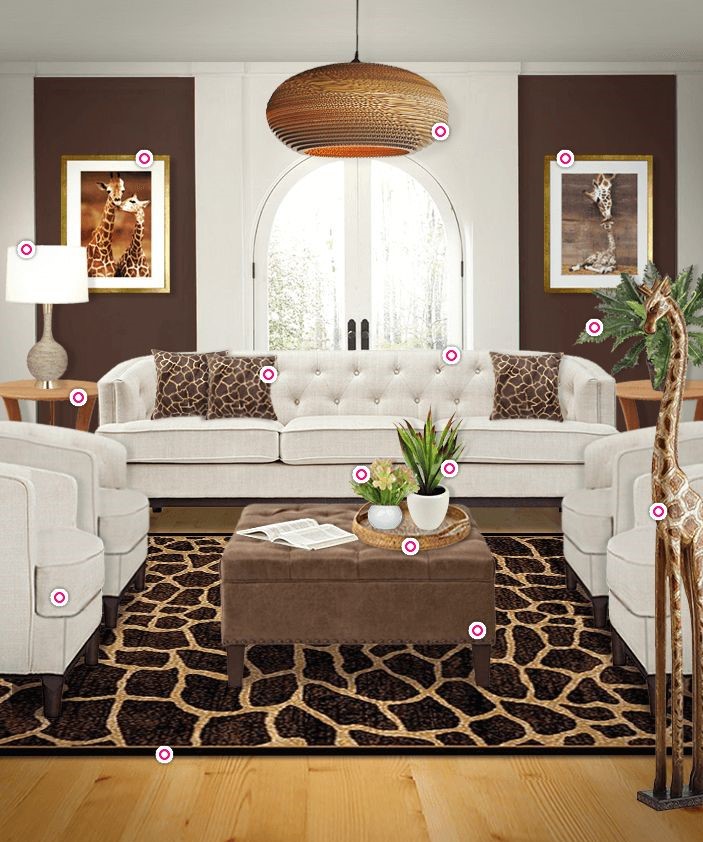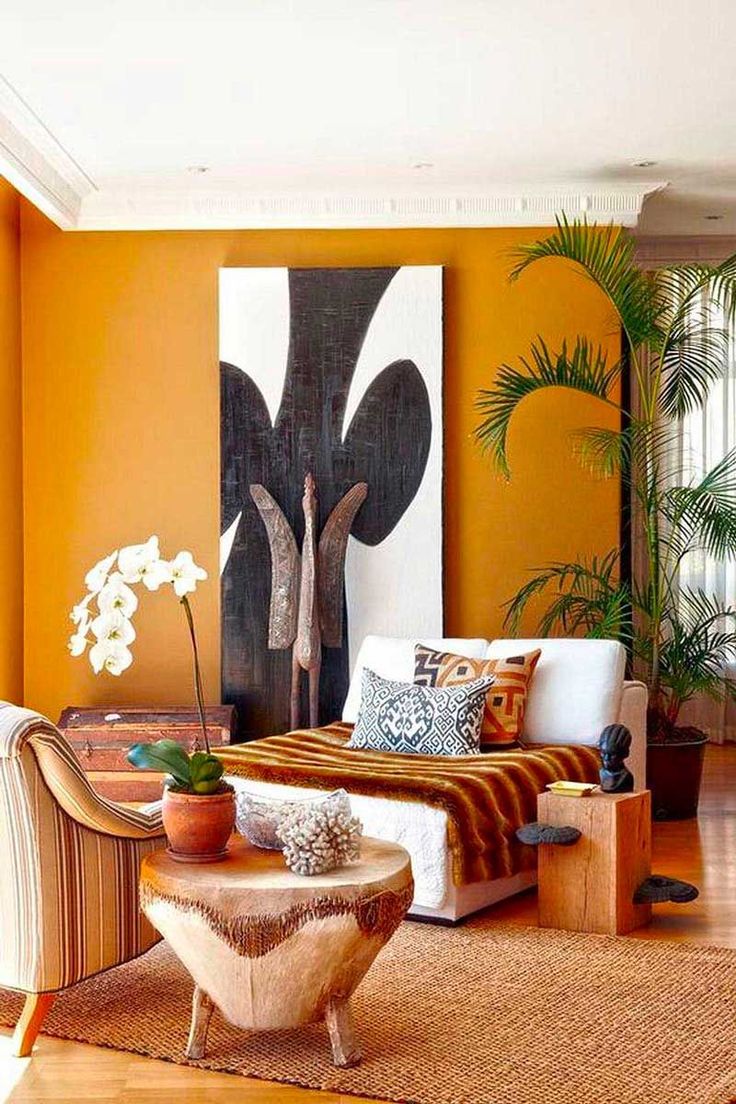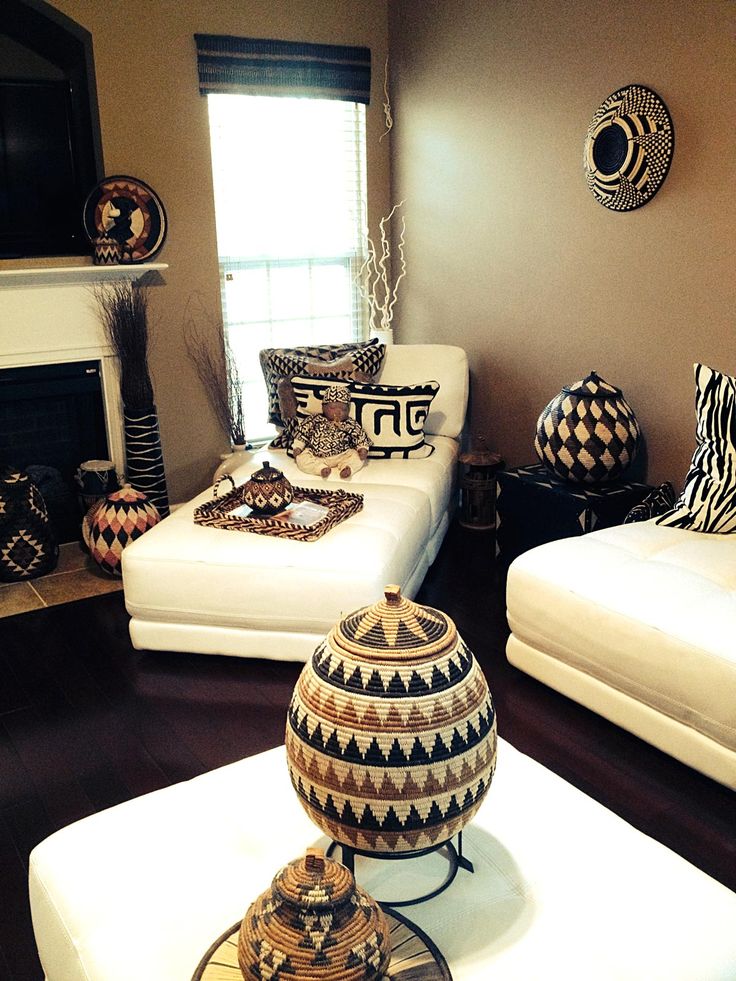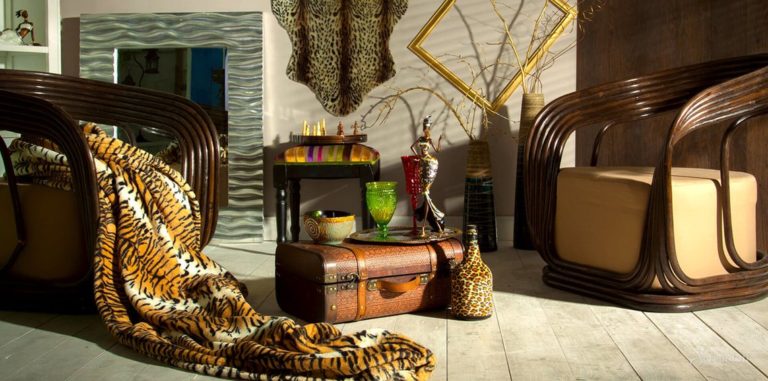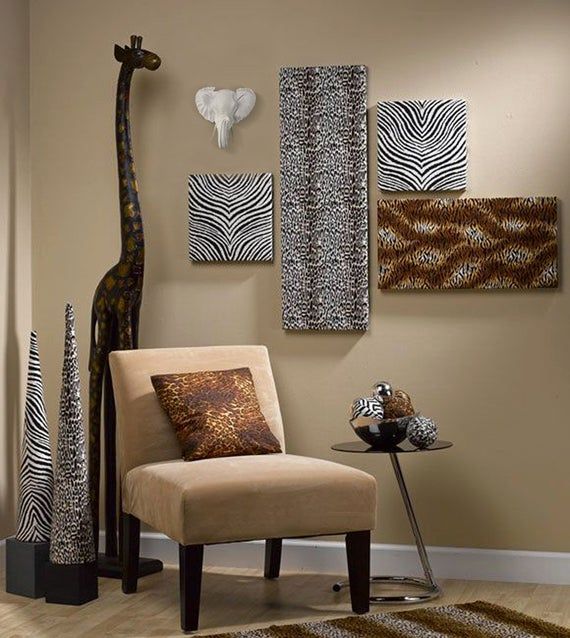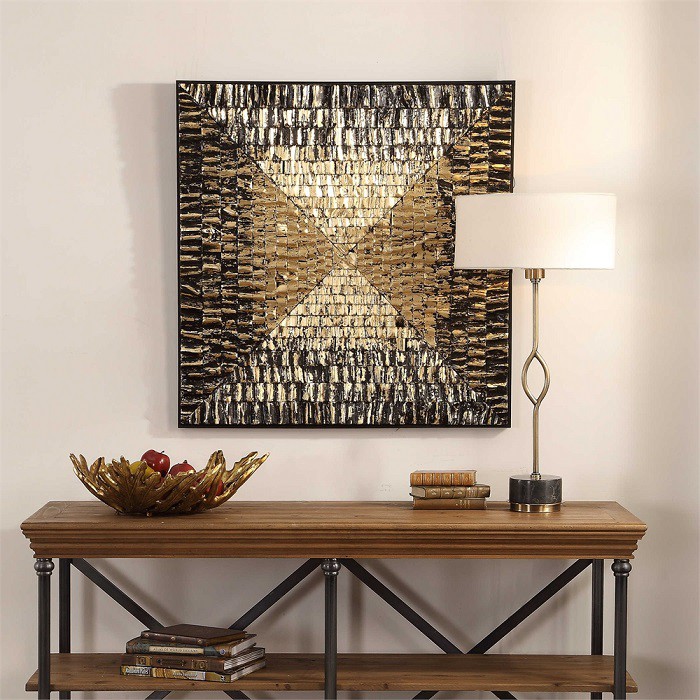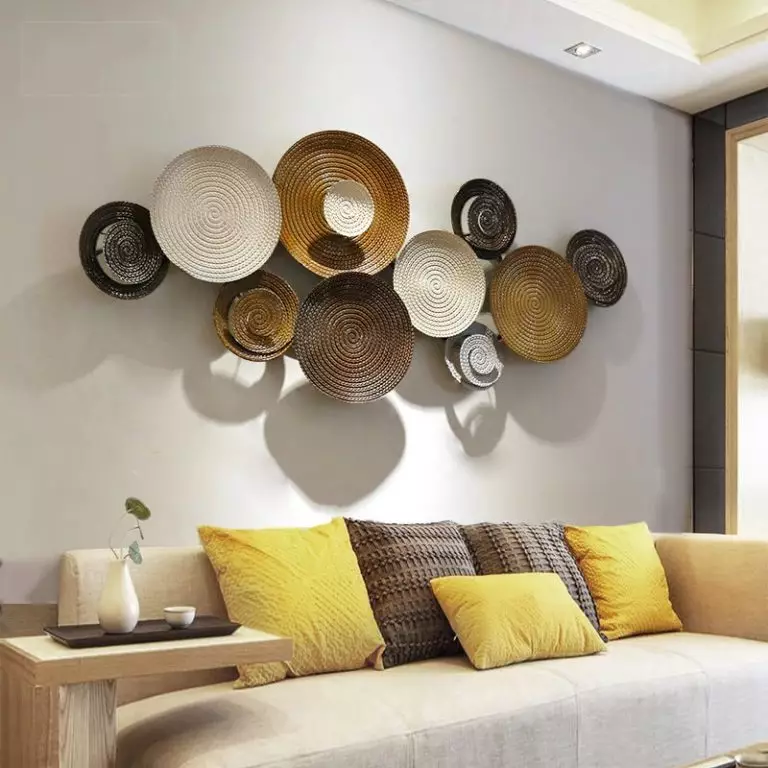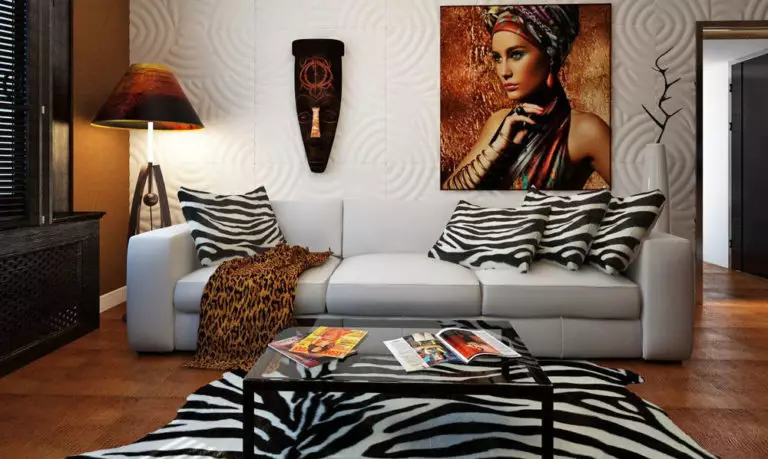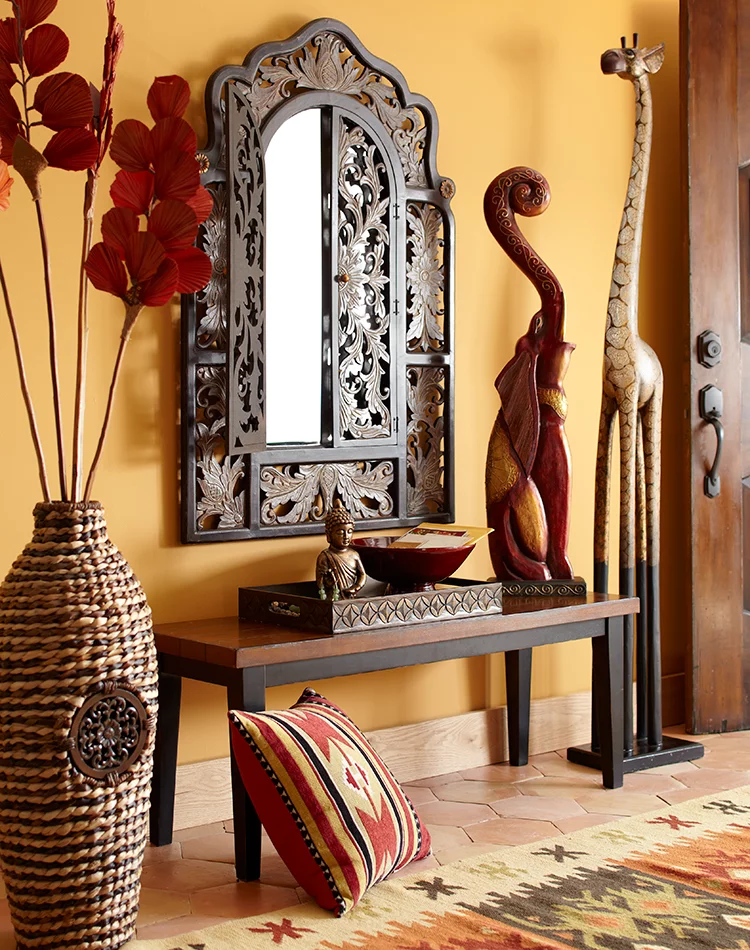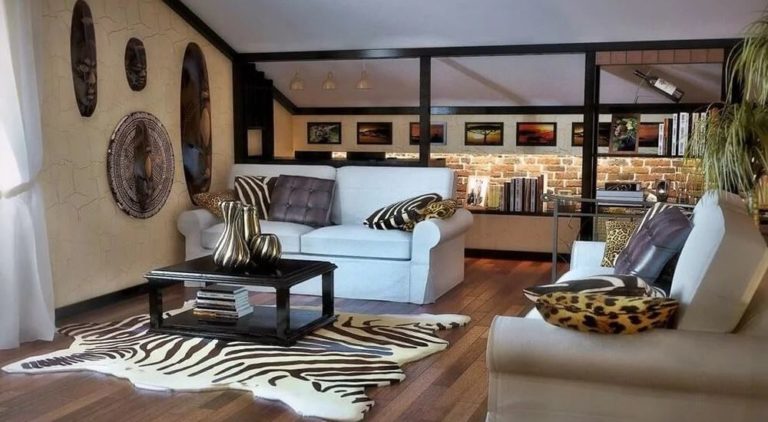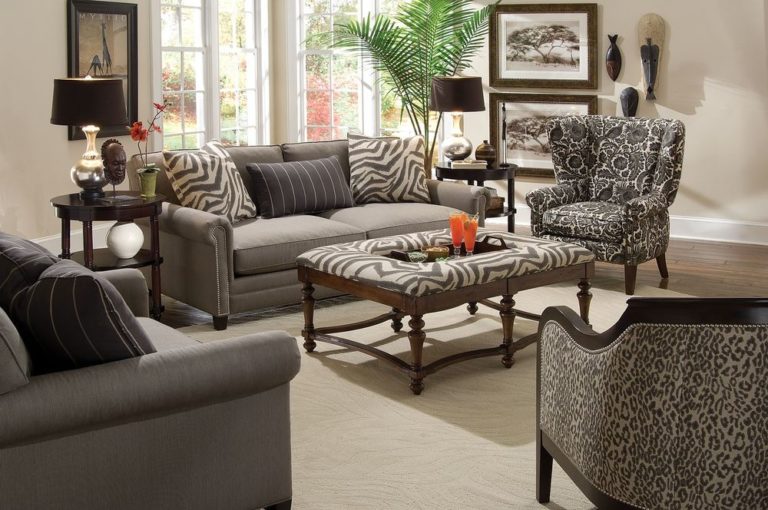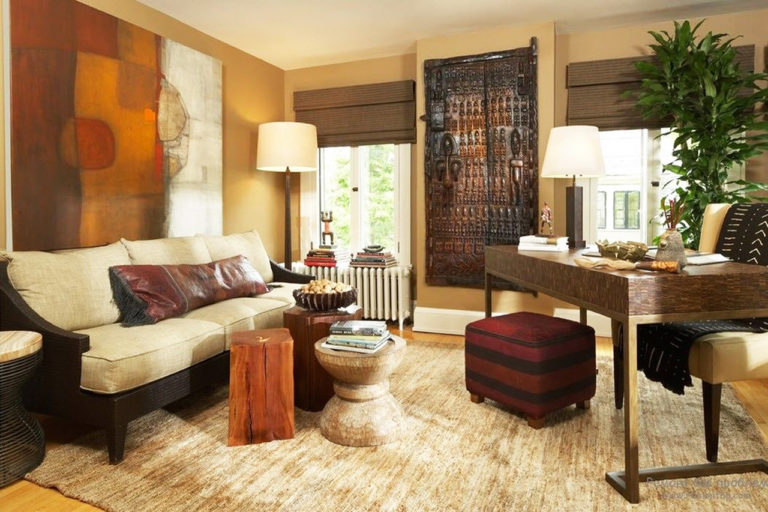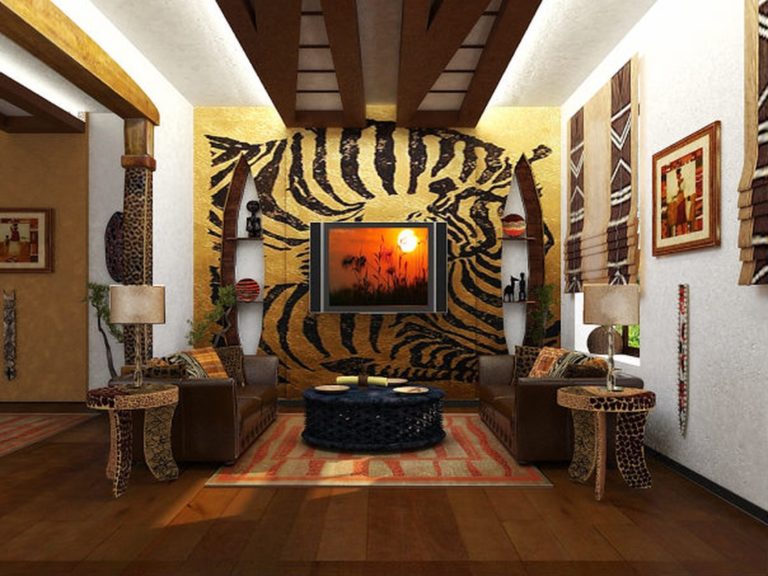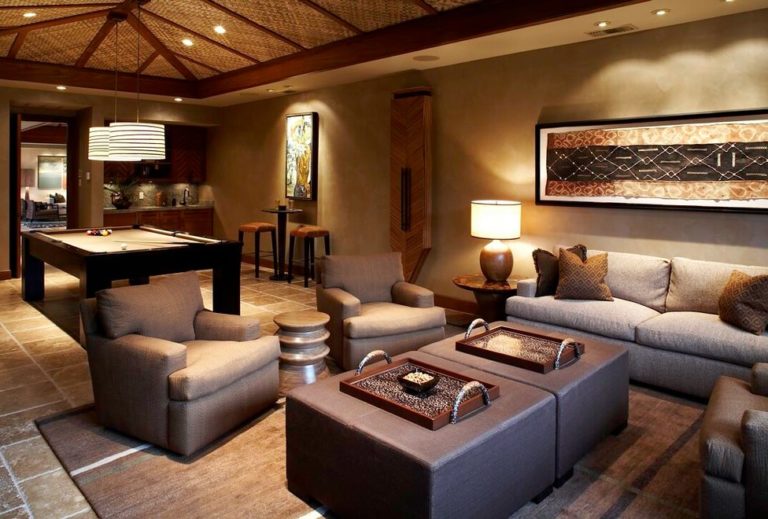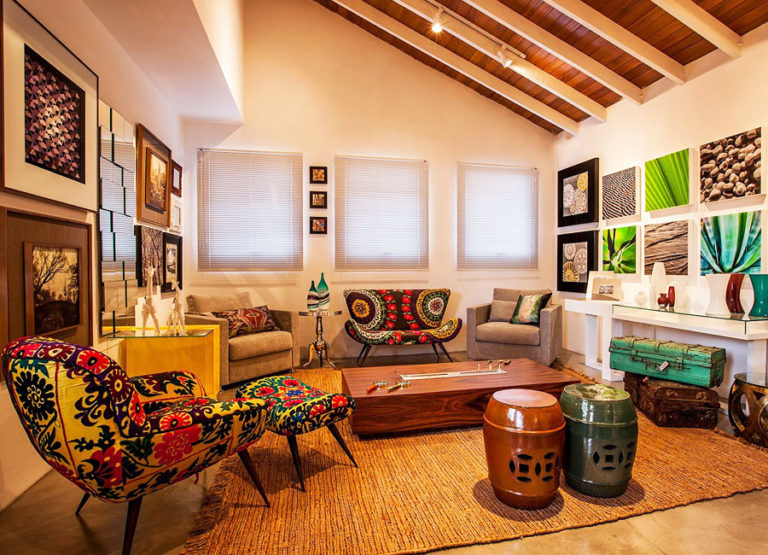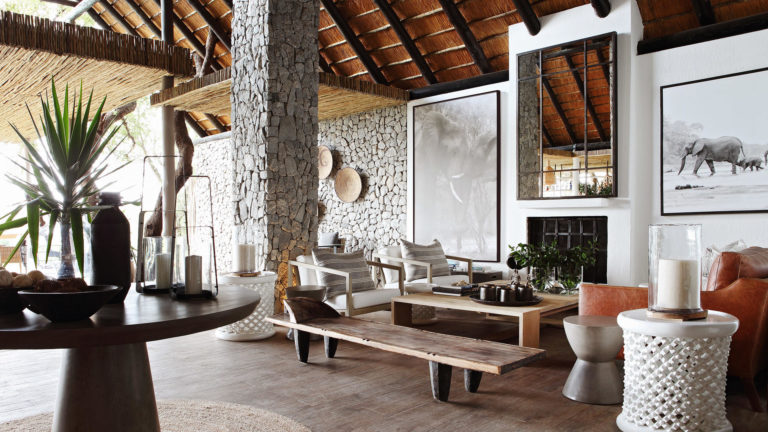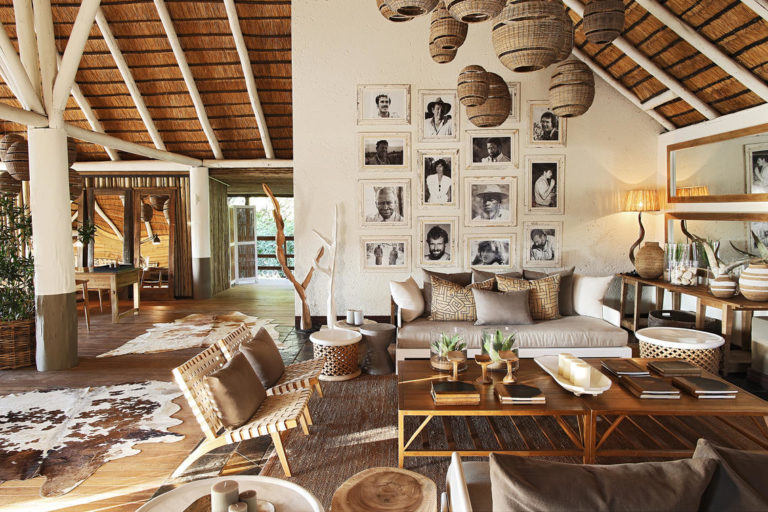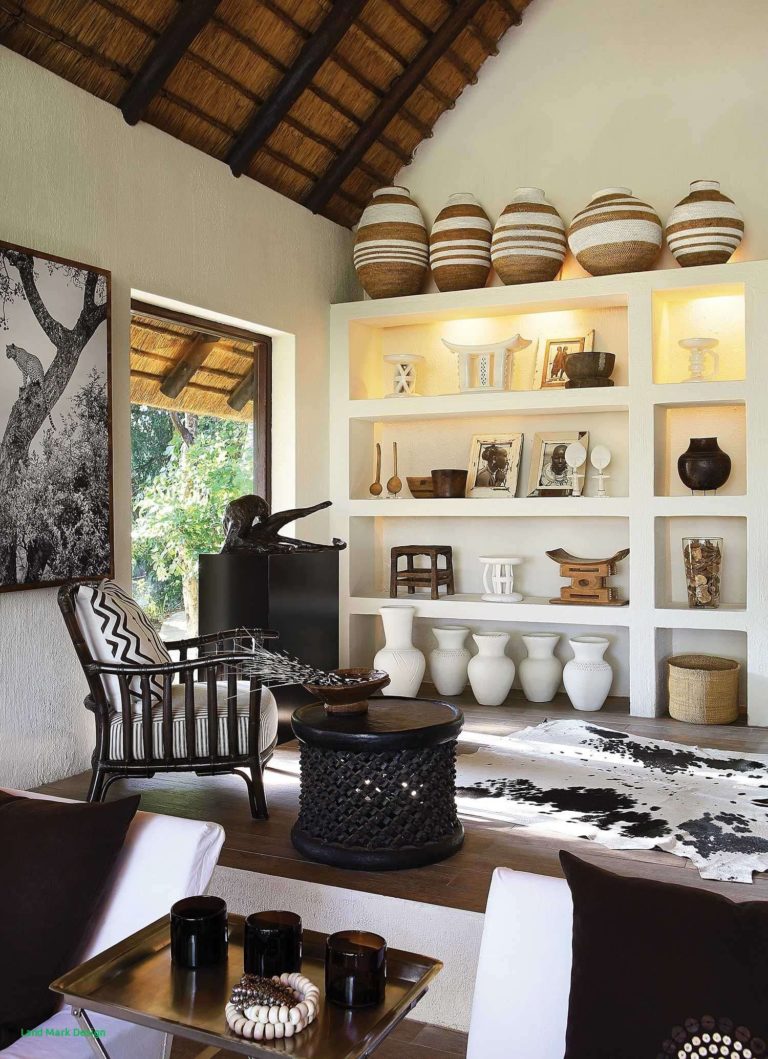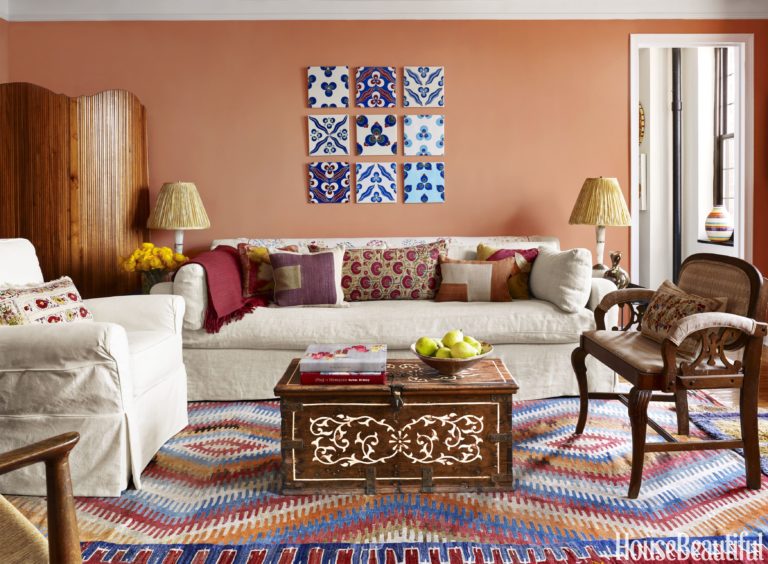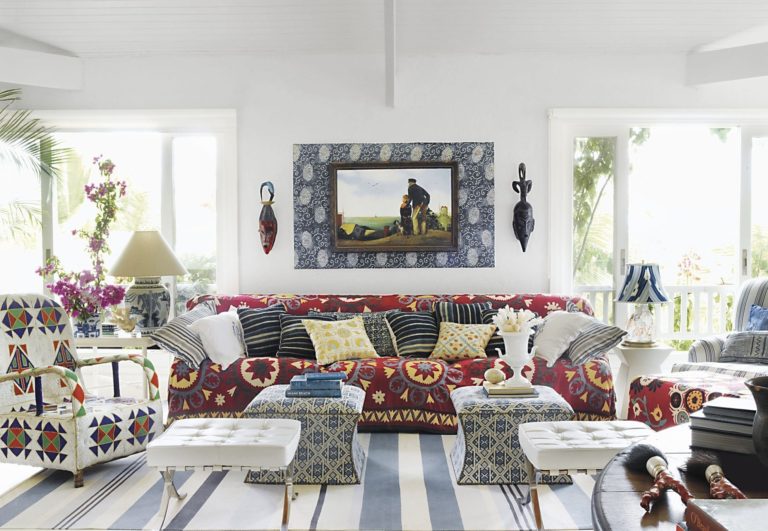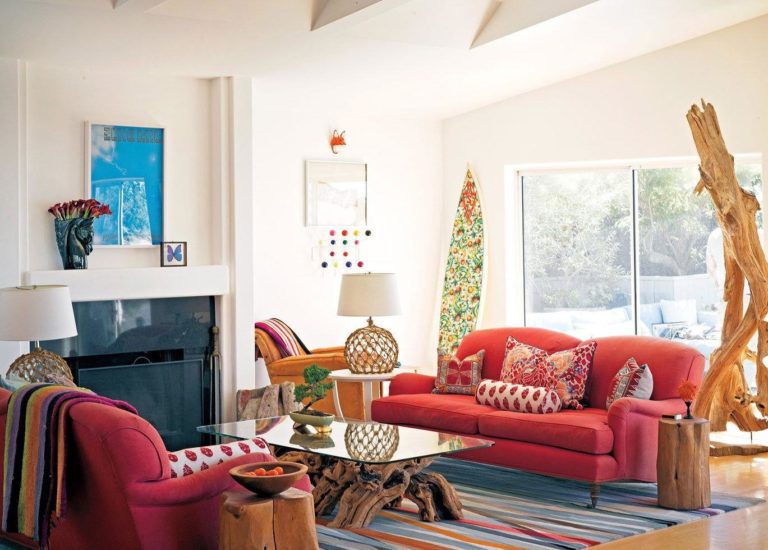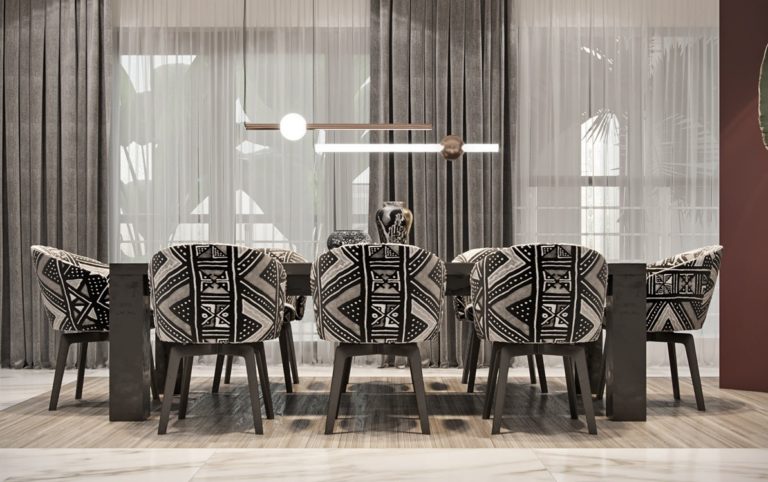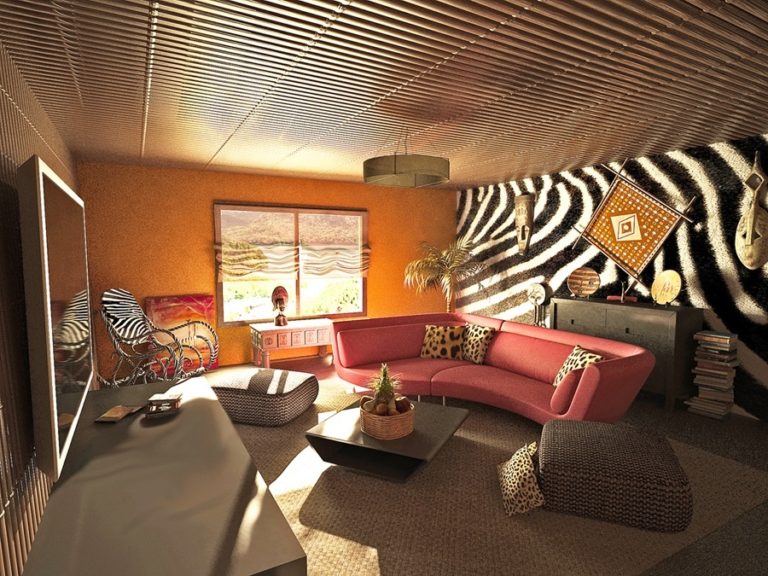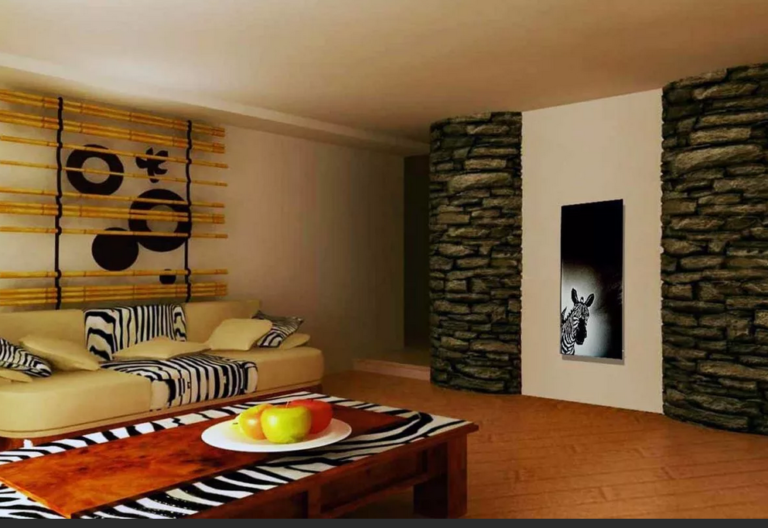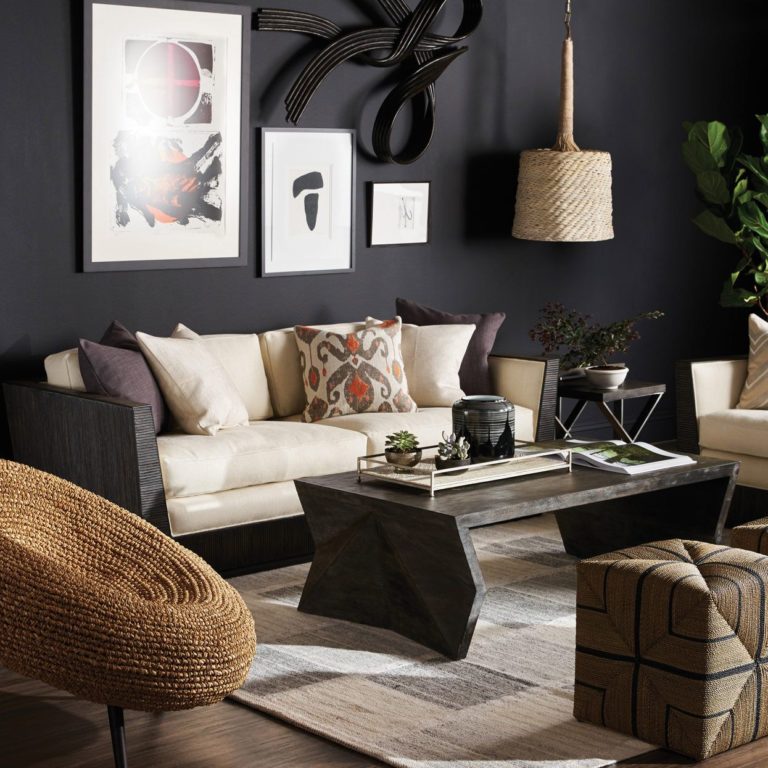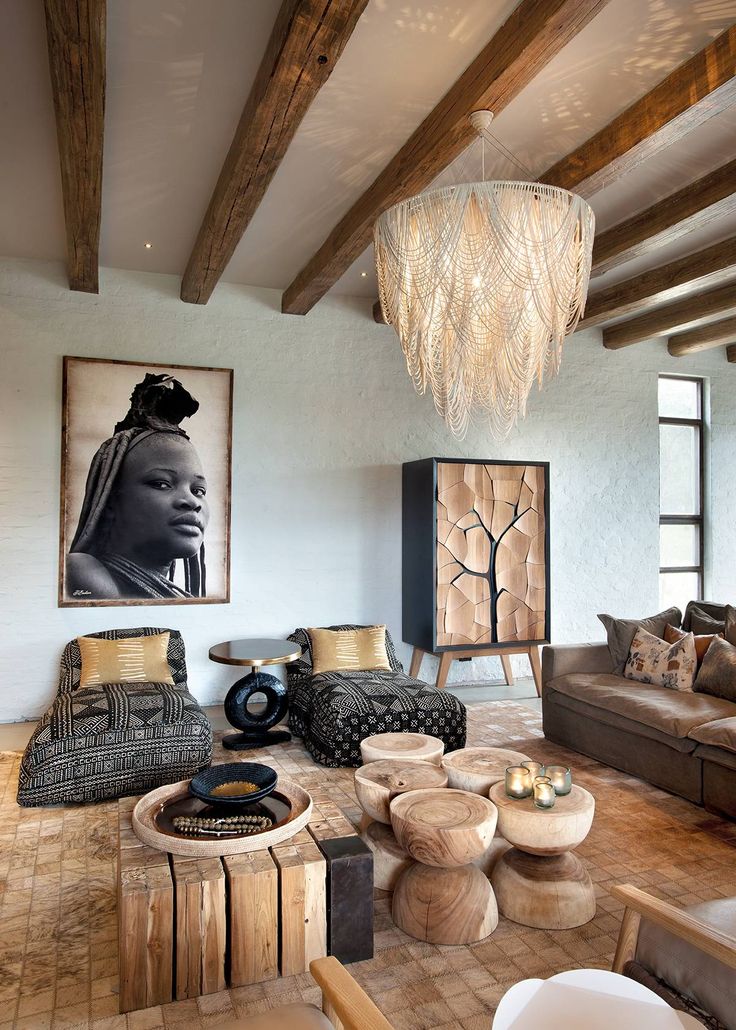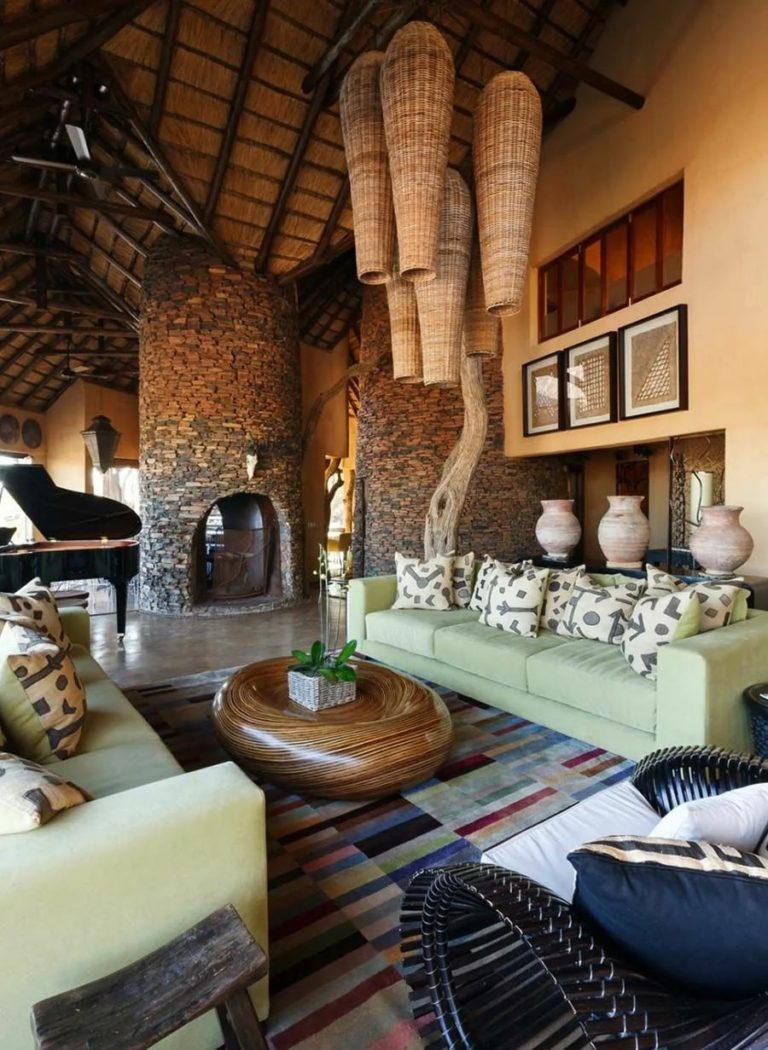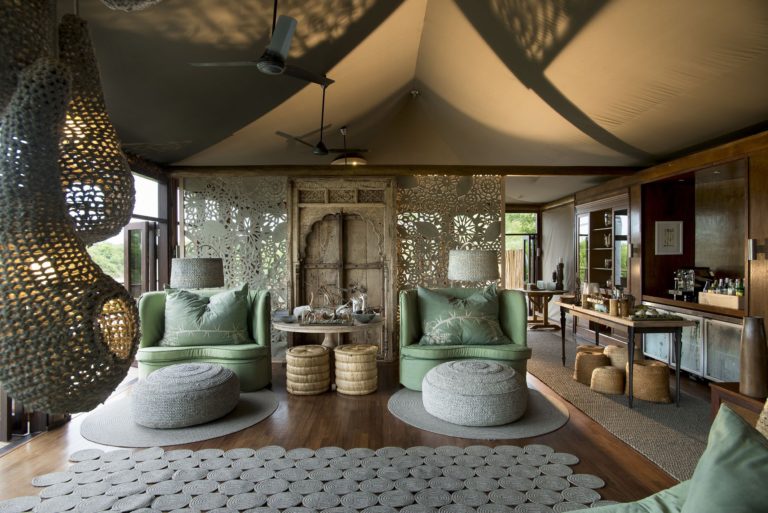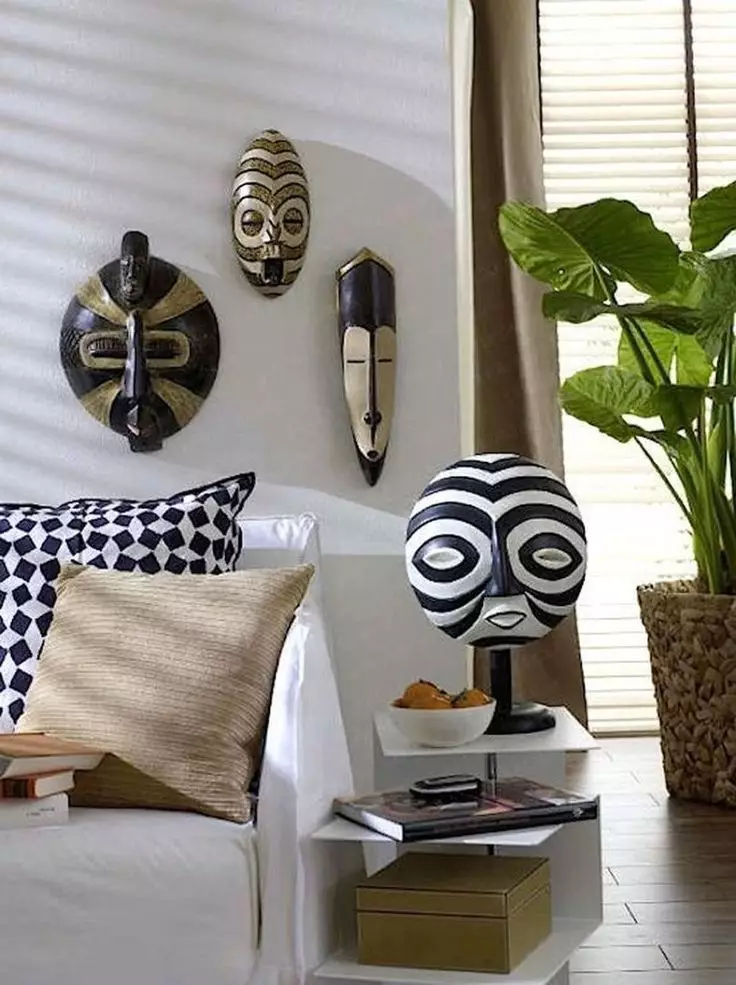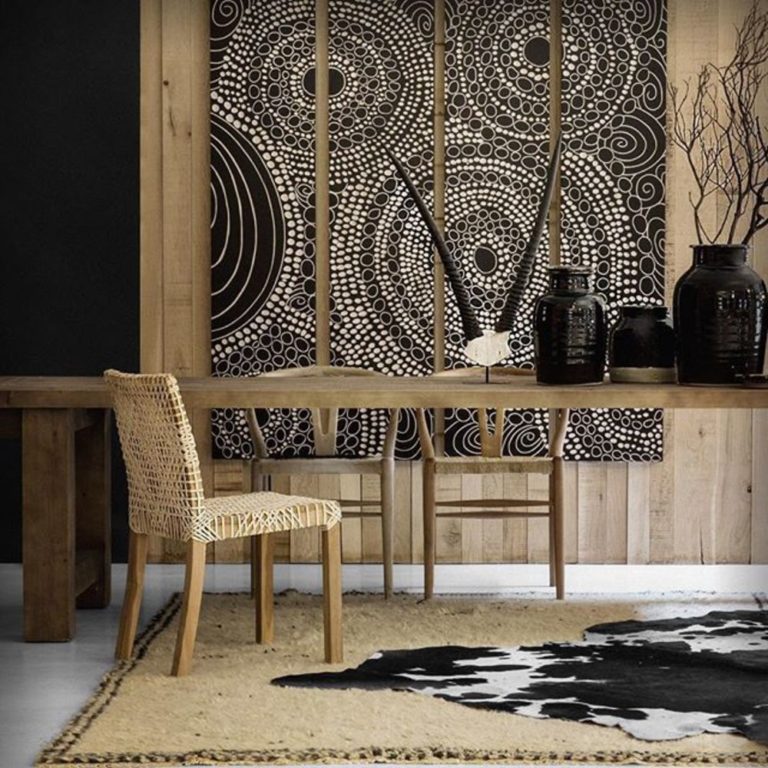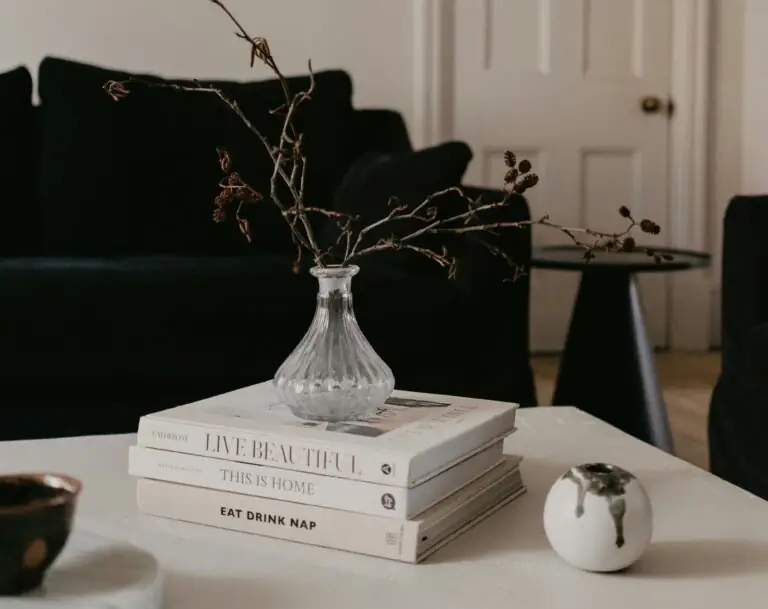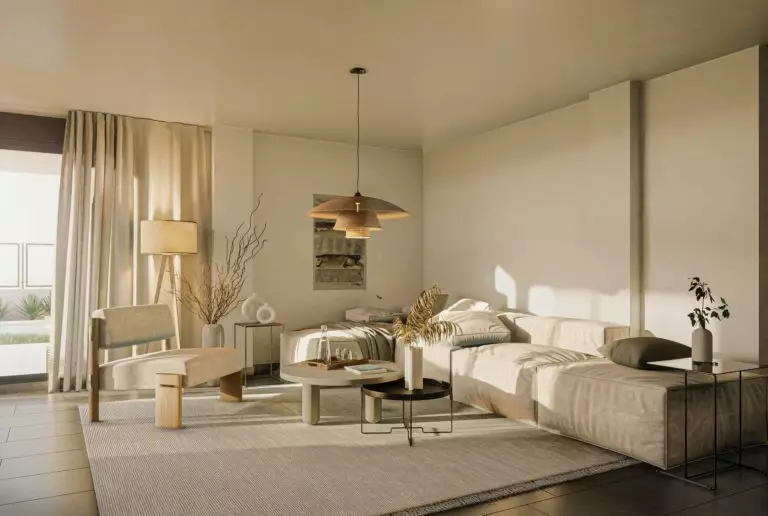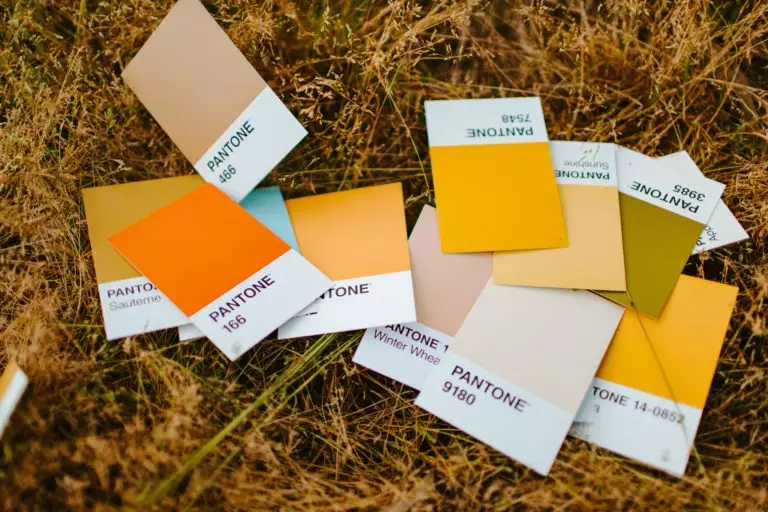Safari landscapes and wild animals: Living room in African style
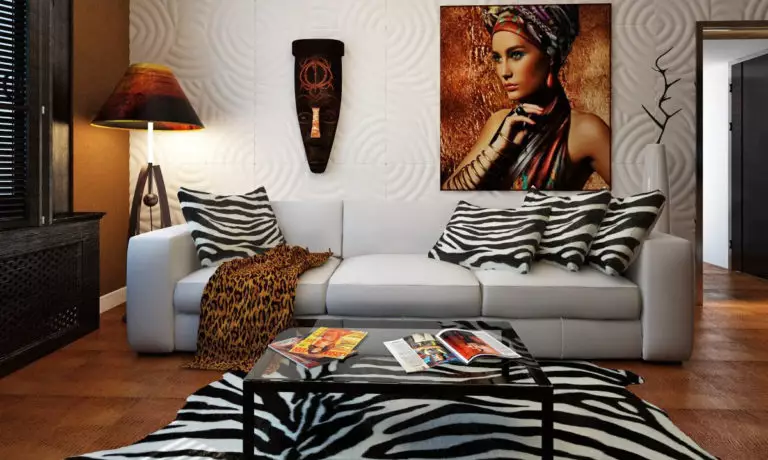
Vibrant warm colors, natural materials, and unusual decor will transform your living room in a ethnic and authentic decor. However, it is not easy to create a harmonious atmosphere – sometimes it is difficult to resist not to add a few more trifles to the decoration. How to keep balance without turning the living room into a museum or souvenir shop, we will show you in the article below.
The living room, due to its large size, is excellent for the African style. A large amount of wood is appropriate in the interior of the living room. Low sofas with leather upholstery of a straight or angular shape look good as upholstered furniture. You can complement the relaxation area by choosing a small coffee table with unique carvings and a floor carpet with an ethnic pattern.
If the living room is used as a dining room, a large dark wood table will successfully fit into the design, and light wicker chairs will suit it. The window can place a rocking chair, and a wooden library next to it is a great place to read.
Masks, feather decorations, figurines, as well as a large number of natural plants are suitable for living room decor. Usually, these are different types of palms and vines that can be grown at home.
Afro style features
Several standard features are characteristic of this design direction, which are applied to the interiors.
Important! Moroccan and Egyptian directions are influenced by African motives.
To create a harmonious interior, you will need to combine typical details, trying not to get bogged down in details. First of all, these are dynamic ornaments, bright colors, expressions. In Afro style, only natural materials are used, the forms of furniture and decor are simple.
One of the most distinctive features is the animal themes in decor. These can be prints on textiles, paintings with images of lions, zebras, etc., leather and even stuffed animals.
Color spectrum
The African style in the interior is distinguished by the warm colors inherent in the landscapes of Africa. These are all variants of brown from light to dark wenge, grass green, olive, sand shades, brick red. Contrasting combinations are relevant, for example, black, red, and gold.
If you don’t like bright combinations in the African style in the interior, you can choose a softer color. In dark rooms, combinations of red and black are too gloomy and difficult to perceive. If the living room is small, it is better to choose yellow tones, beige, light brown, ivory.
Shades such as saffron, amber, honey, cinnamon will look great. You can refresh the design by adding a little turquoise or light blue, blue to the calm range. Color combinations should be as close to nature as possible, try to choose only natural colors and avoid overly bright neon shades.
Wall decoration
There are many ways to create an African interior. When choosing finishing materials, first of all, you should give preference to texture and colors. The classic option for wall decoration is a reed, but it can be replaced with textured wallpaper imitating snakeskin, or wallpaper with animal prints.
Important: animal prints are very bright, in order to avoid excessive variegation, they must be diluted with more neutral wallpapers, for example, beige, sand, white, etc.
Irregular plaster of light colors or imitation of walls covered with red clay is also relevant. Borders with traditional African ornaments or replica of rock paintings look good as decor. You can also choose an ordinary paint in warm colors as a finish.
With the help of paint, you can achieve an interesting effect of cracked earth under the hot African sun. To do this, it is enough to choose two colors – one background, and the second contrasting. The cracking effect is created using craquelure varnish. As a result, after processing, the walls are covered with a network of small cracks. Craquelure varnish can be applied to cover not only paint but also plaster.
Flooring
The best option for flooring in African living room is natural stone or porcelain stoneware. The choice of shade depends on the color scheme of the walls and ceiling.
The stone is better suited for country houses, but in apartments, you can lay parquet. In African villages, ordinary mats are often used for flooring instead of textile carpet.
Natural bamboo is also an excellent material for decorating not only walls but also floors. As a last option, you can use various imitations, such as laminate with a characteristic pattern or even linoleum. Both options are quite budgetary, but the quality of the coverage is quite high. If possible, you can order slabs made of natural bamboo, but it should be borne in mind that the cost of such a floor will be quite high.
Ceiling decoration
The easiest option for decorating the ceiling is the usual white or plaster of white, milky, beige. This design will fit into any interior, and the neutral range goes well with any color of furniture, walls, and accessories.
If the height of the ceilings allows, you can decorate them with decorative dark wood beams. Artificially aged surfaces look spectacular, and not straight ideally smooth beams, but processed driftwood or wood trunks look original. In small places, the decoration should be extremely simple.
You can decorate the ceiling surface using bamboo stems or natural reeds. To implement this idea, you will need to purchase bamboo ceiling tiles or attach the stems directly to the beams. The slabs can also be attached to beams or battens or a regular base.
Materials and furniture
Since natural materials distinguish the African style in the interior, synthetic coatings and facades should be avoided whenever possible. As a last resort, useful quality simulations can be used.
What other options might be:
There is no room for elegant lines and sophisticated decor in African interiors. Furniture should be heavy and rough; its forms are simple and strict. Try to keep the proportions correct. But the facades of the cabinets can be decorated with traditional carvings or ornaments. Forged furniture and accessories will perfectly fit into the interior; wicker boxes, armchairs, tables, small coasters, etc. will also look appropriate.
For upholstery of soft sofas, armchairs, and poufs, it is better to choose natural leather or imitation with an animal print. In small living rooms, an abundance of bulky furniture only exacerbates the situation, making it even smaller. In this situation, it is more appropriate to choose as many wicker elements, open shelves, etc. Wicker chairs and sofas will perfectly fit into such an interior, and for softness, you can put bright pillows, bedspreads, or decorative mattresses. Many blankets and quilts also allow you to freshen up the atmosphere if you cannot replace the furniture with a new one.
If you have the necessary skills, materials, and tools, you can create furniture yourself. An old drawer cabinet or a locker inherited from a grandmother can be easily updated in accordance with Afro style. New soft leather upholstery or plain snakeskin imitation will quickly transform the look of your old headset. If you got an old table, leather works well for decorating the legs, and the tabletop can be decorated with mosaics. For the decoration of small drawers, natural or artificial fur is suitable.
Textiles and decor
For decoration in the African living room, various ethnic ornaments, are used in the form of zigzags, rhombuses, circles, etc. If we talk about textiles, there should not be too much of it, but the selected fabrics must certainly attract the eye. Colorful curtains, sofa cushions, wall panels, and lampshades are just a few options for using textiles. Traditional ornaments can also decorate furniture, carpets, ceramics, vases.
What else is used for decoration:
If you can’t get authentic ethnic ceramics, you can make an imitation yourself. To do this, take regular earthenware jugs and bottles, and then simply wrap twine around them.
